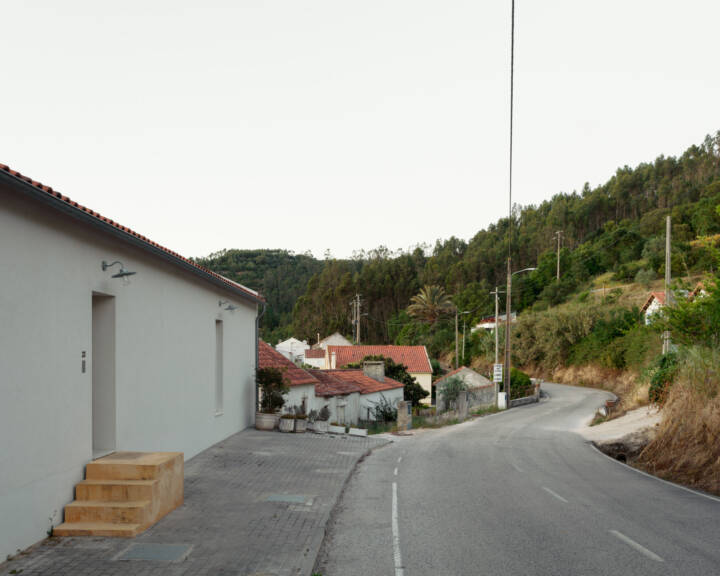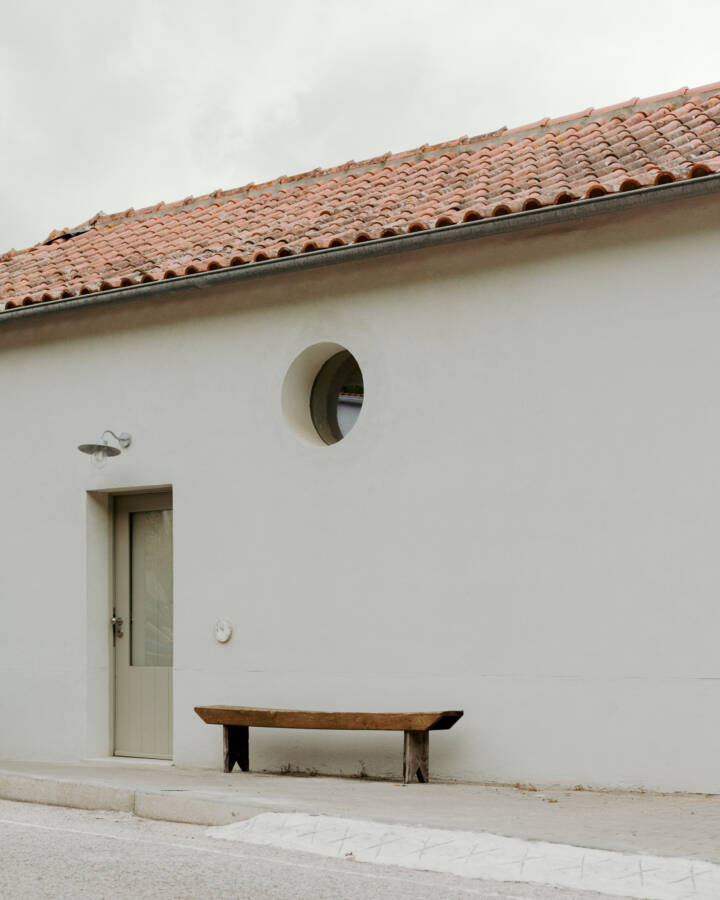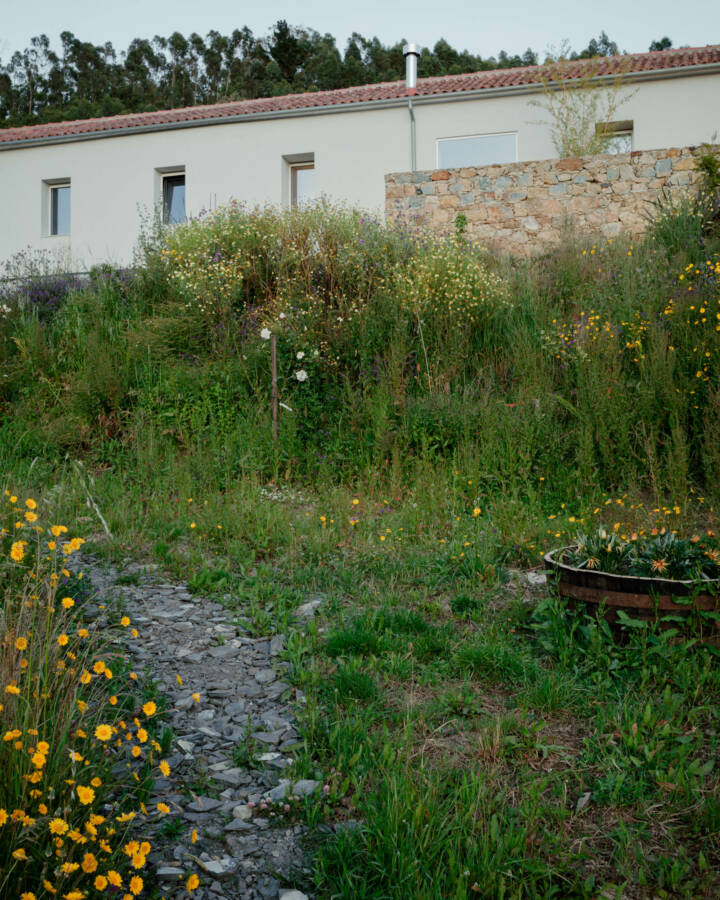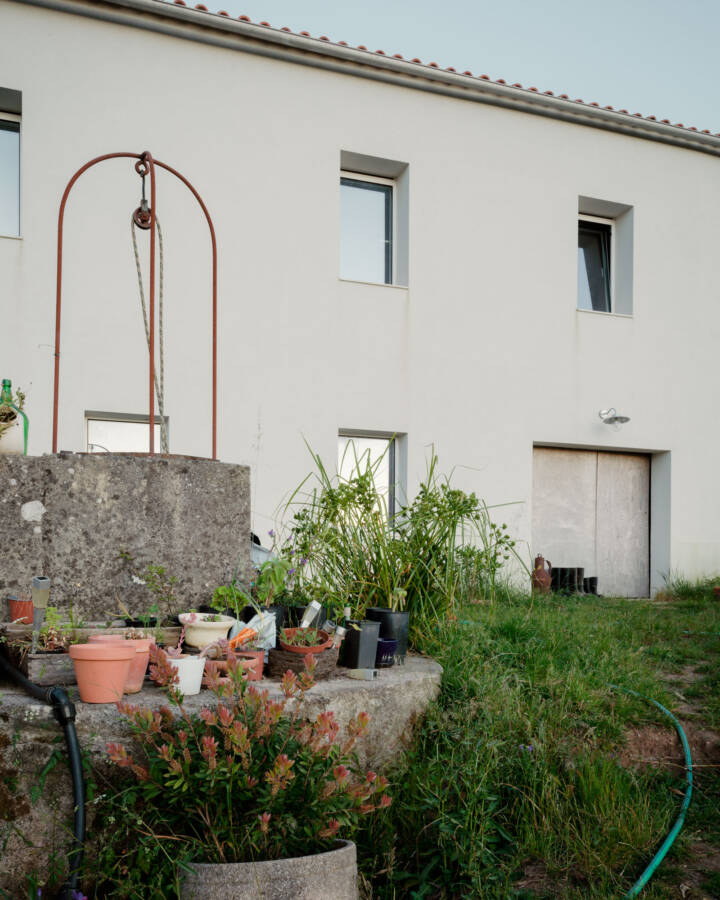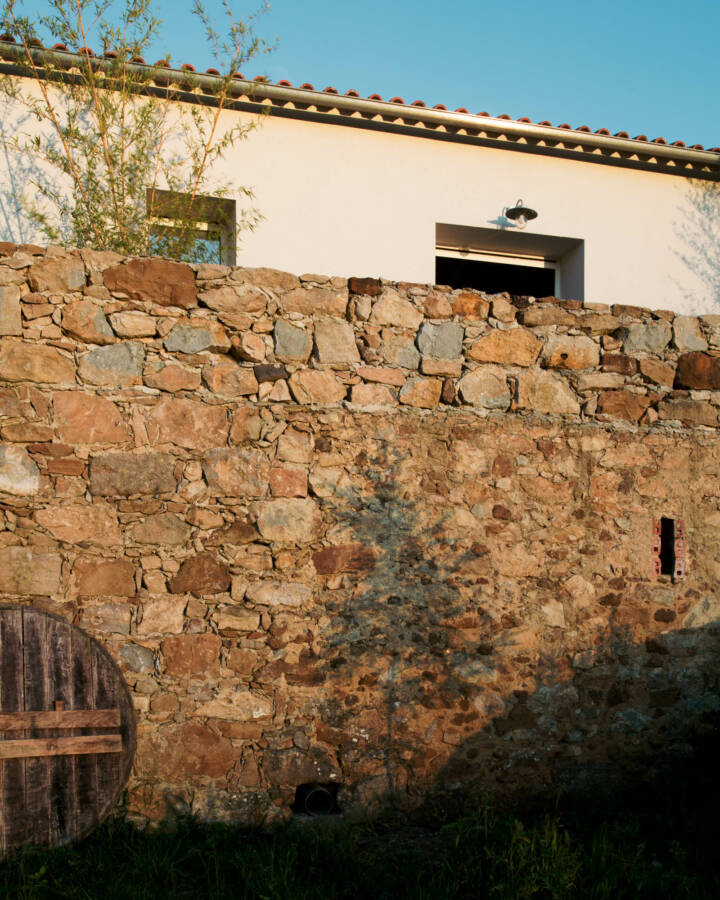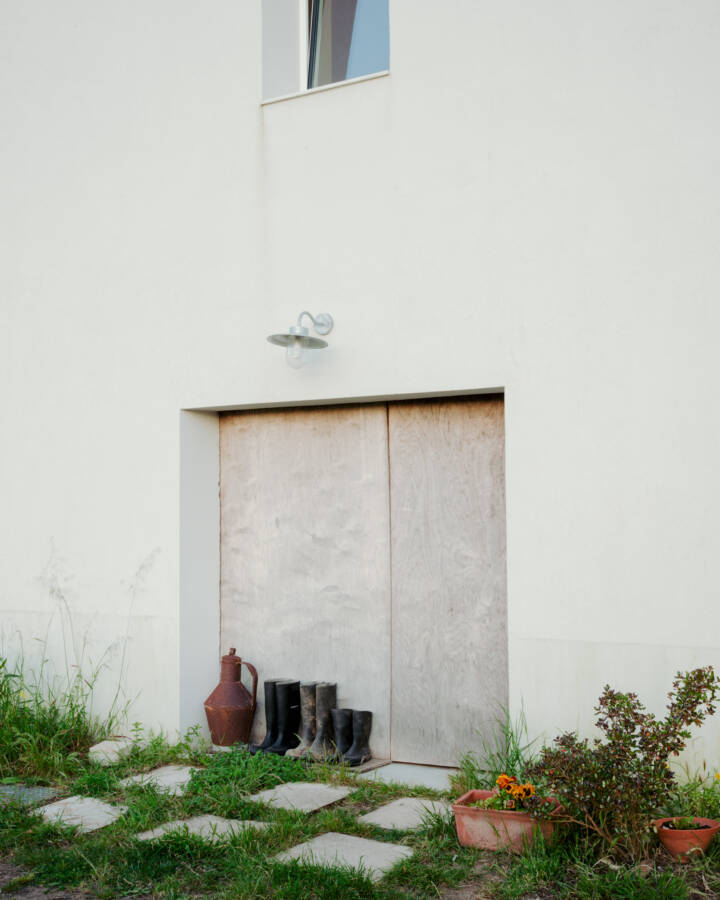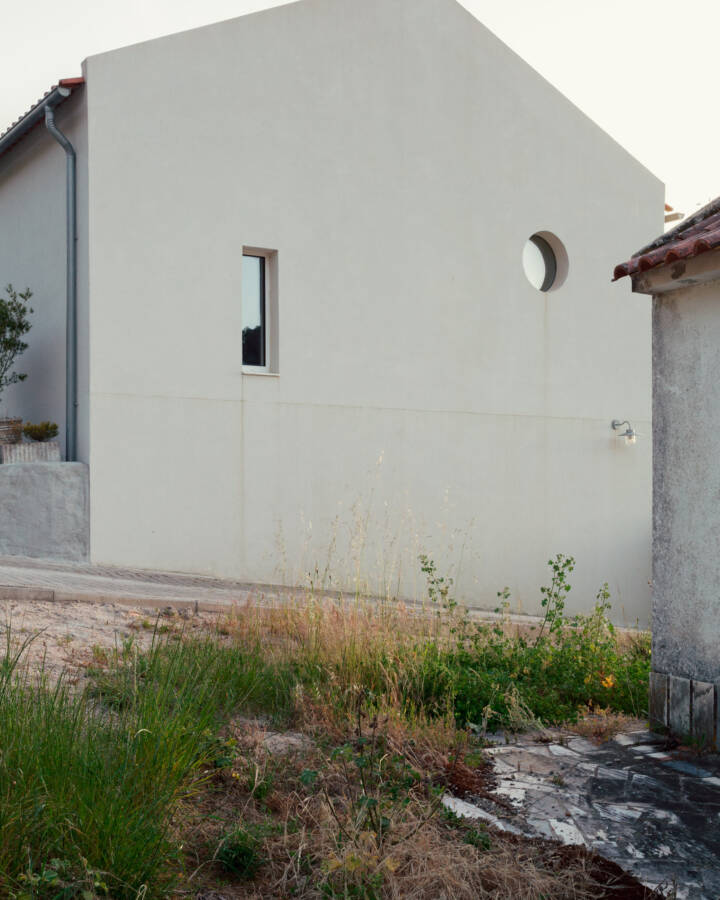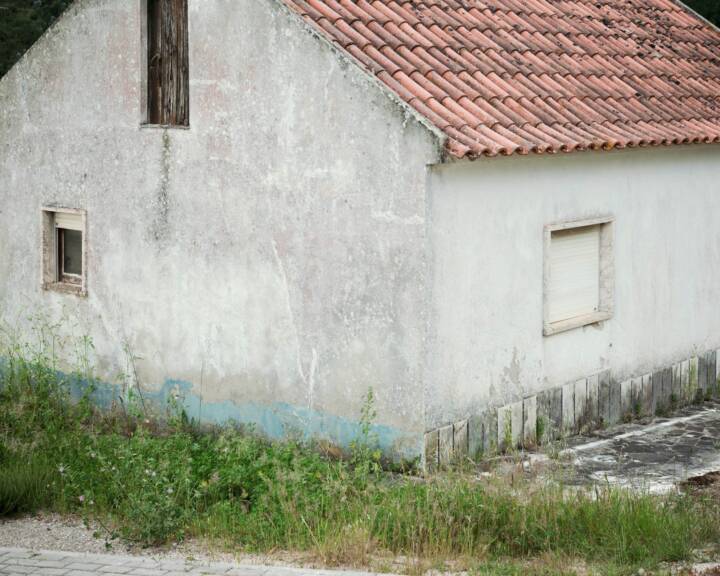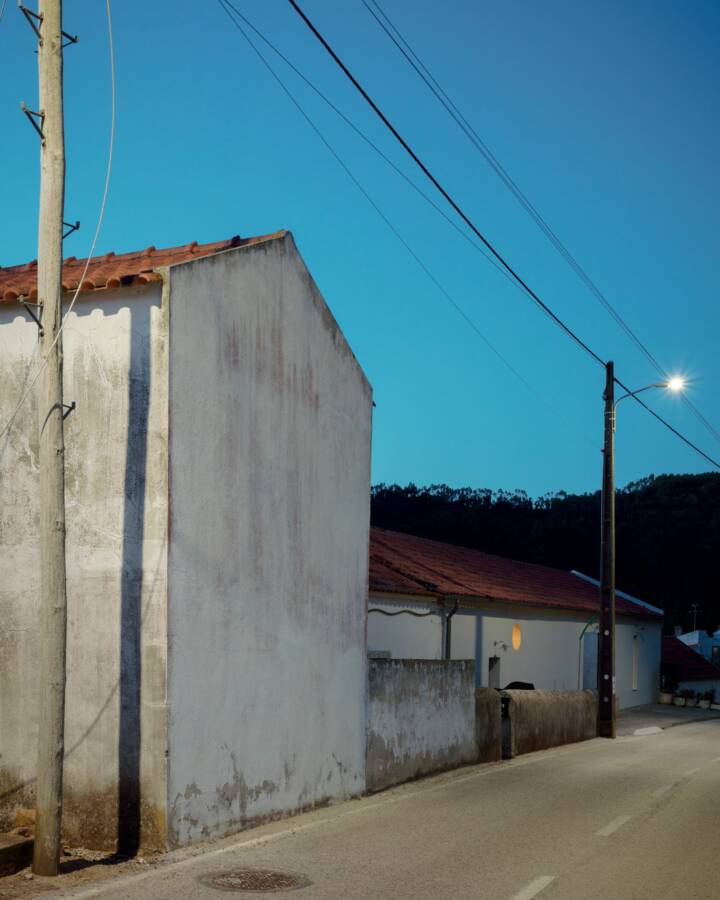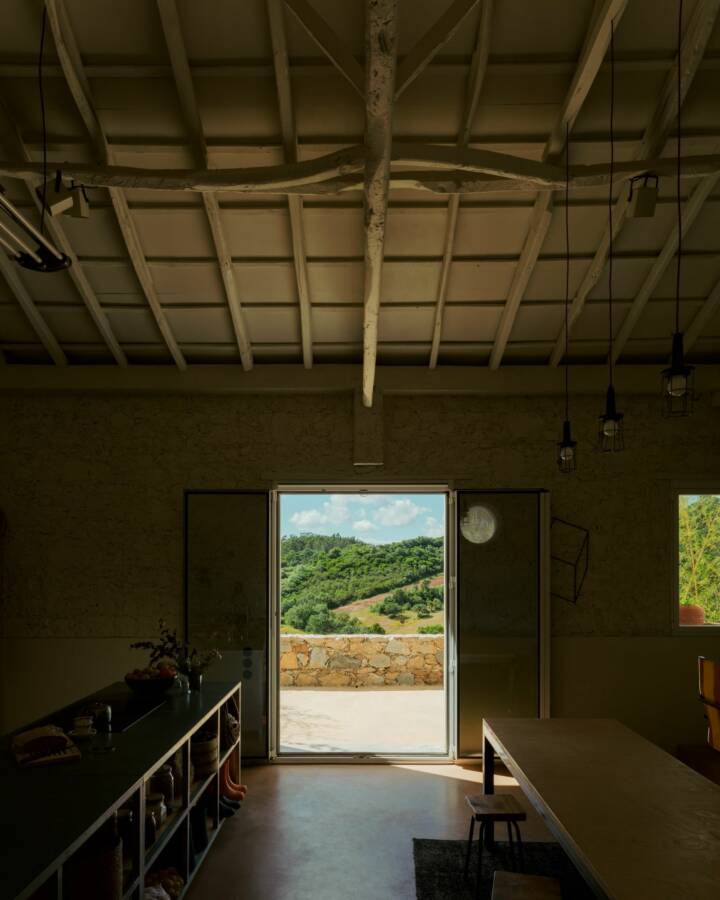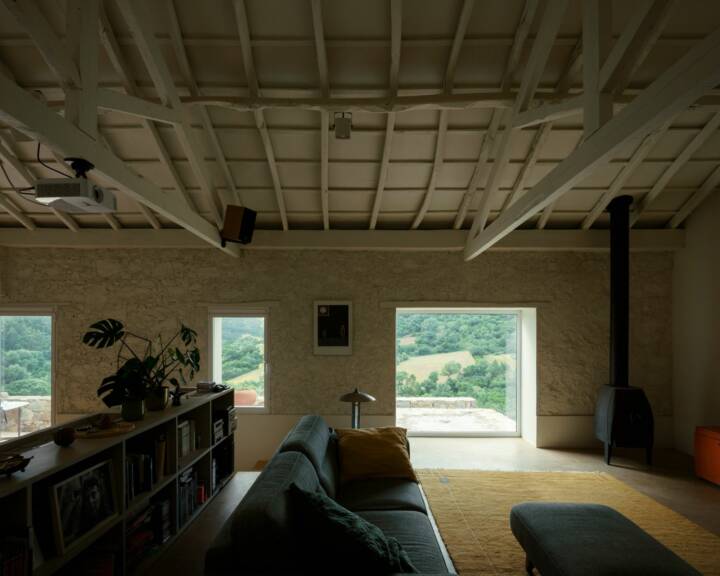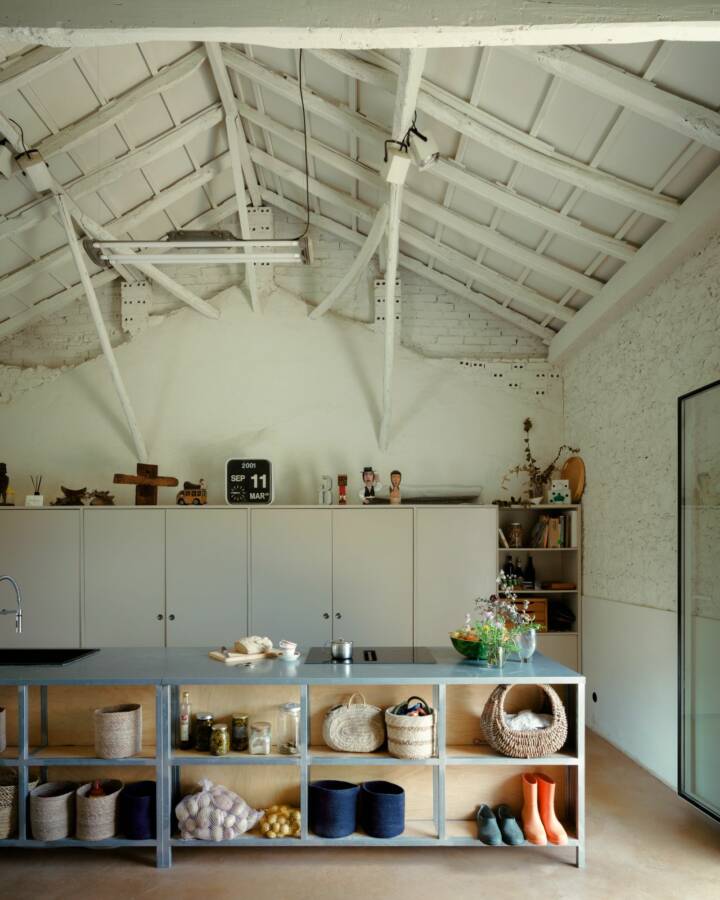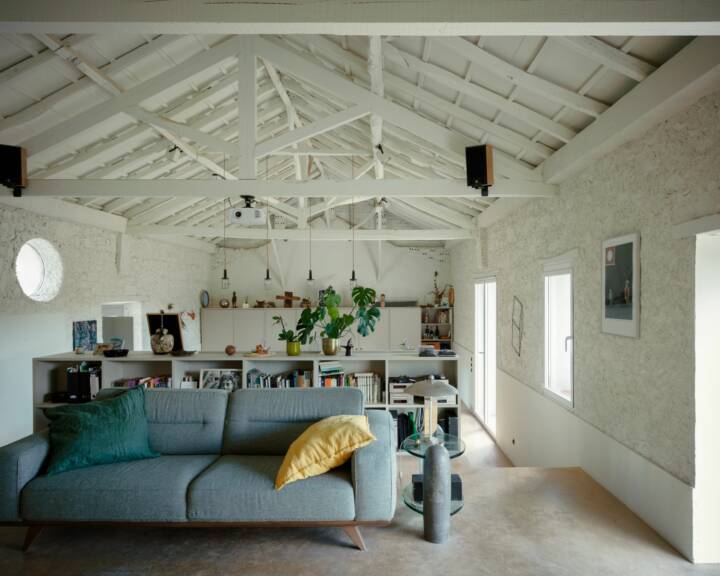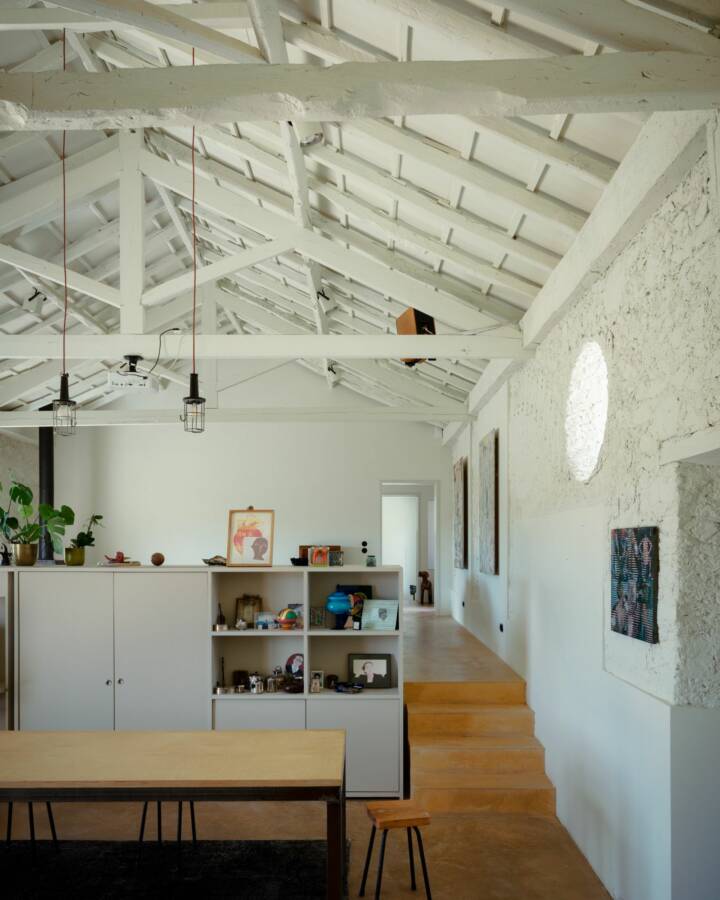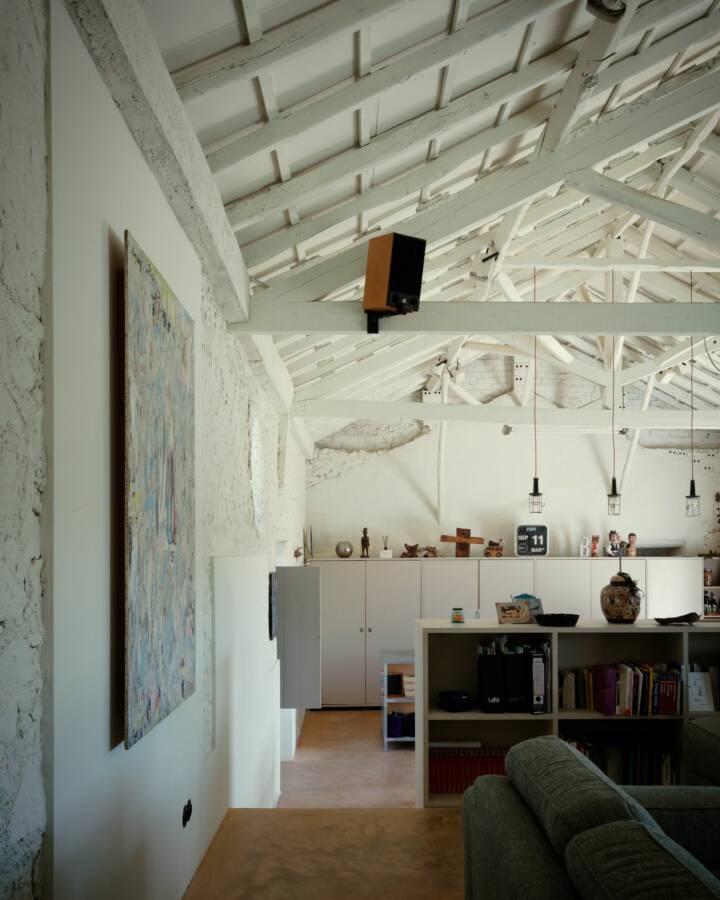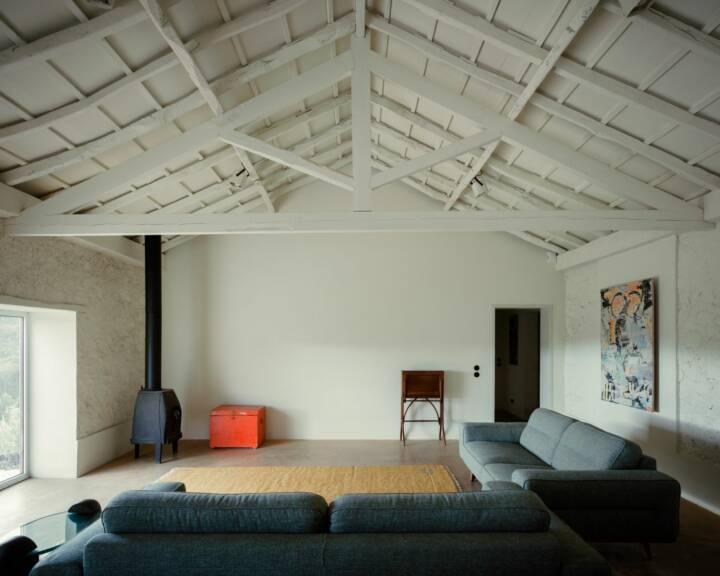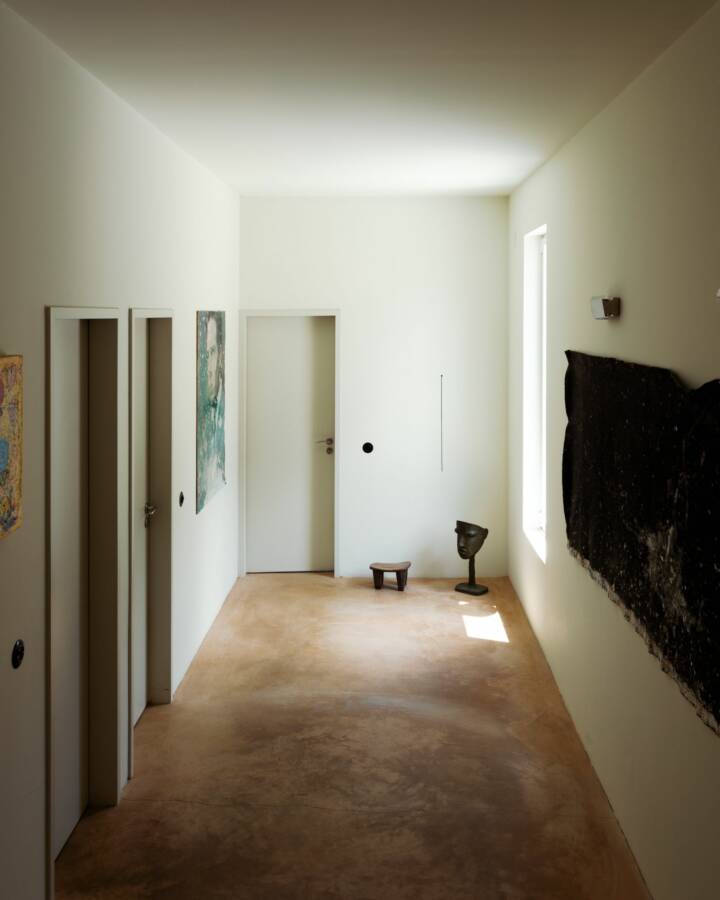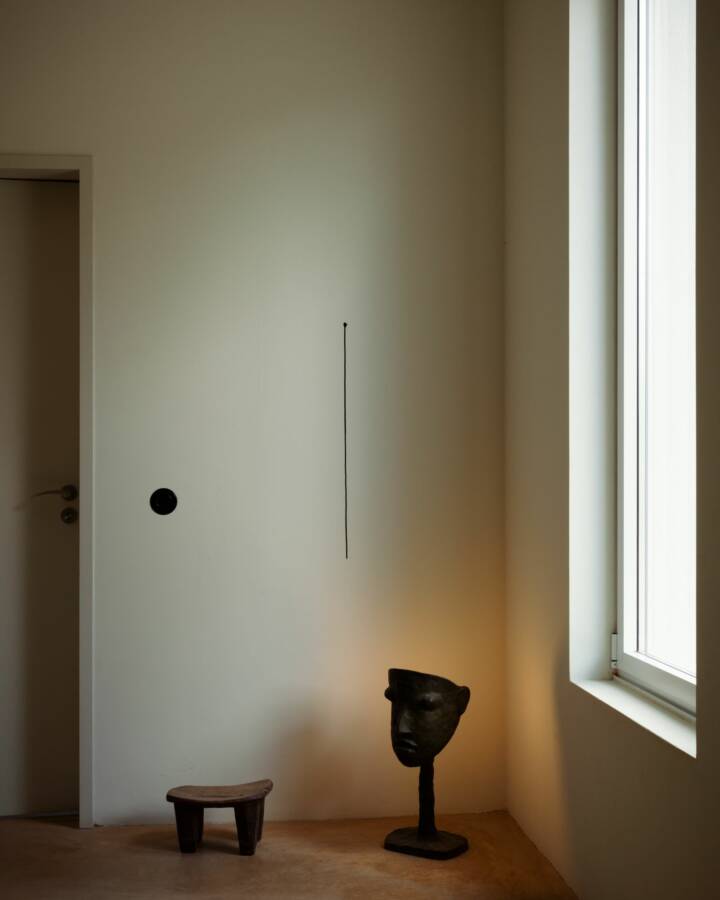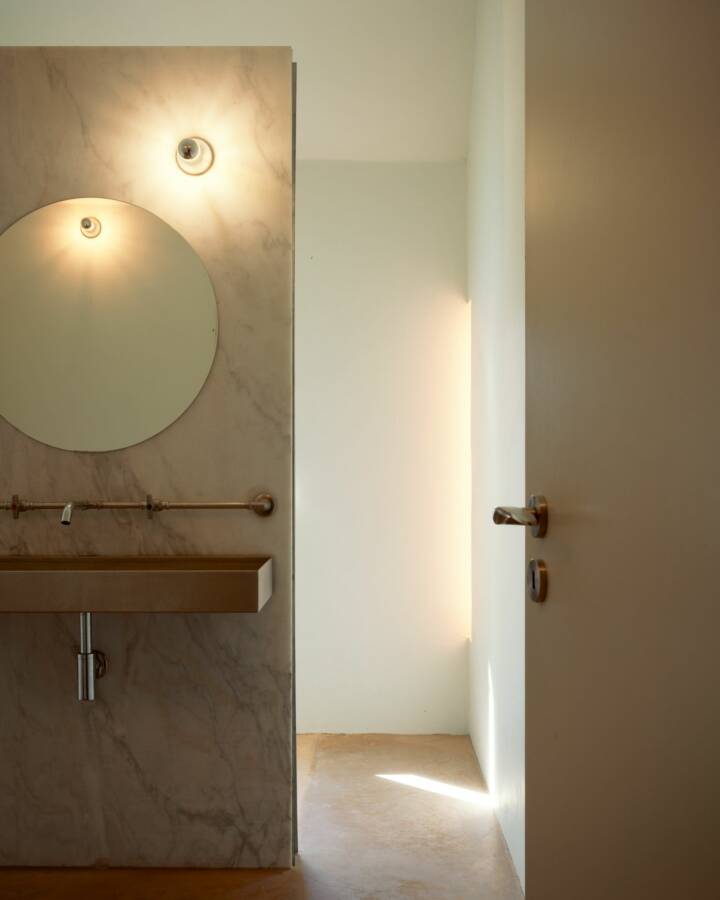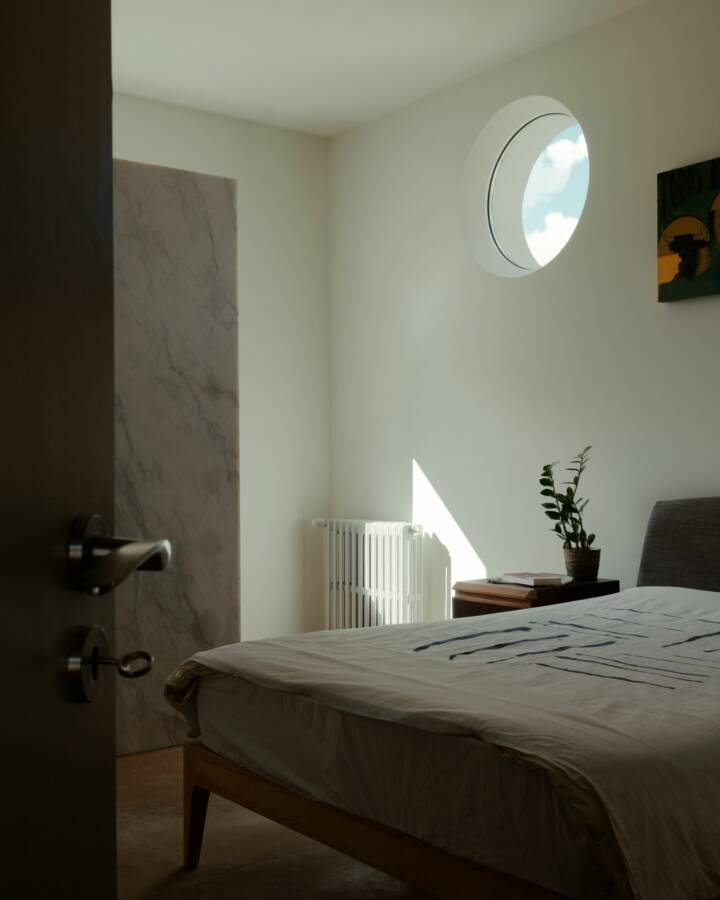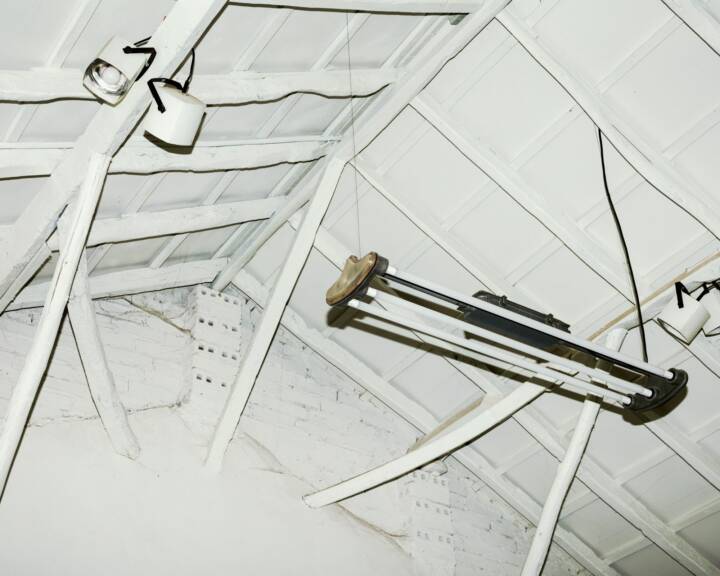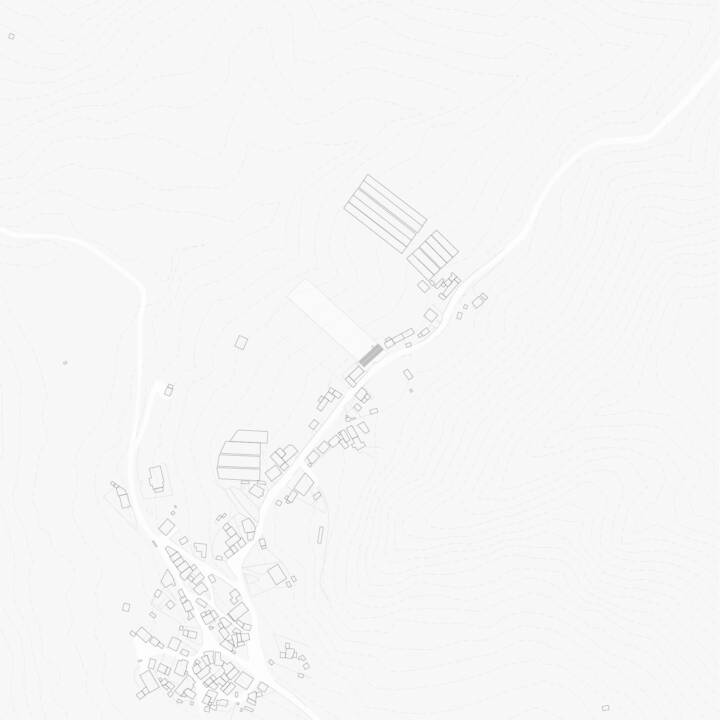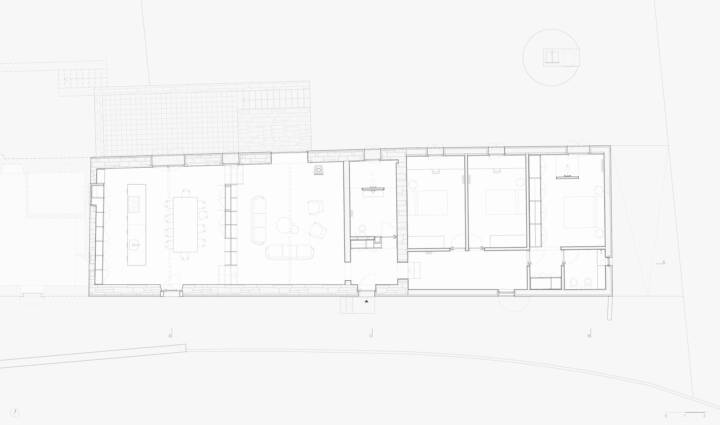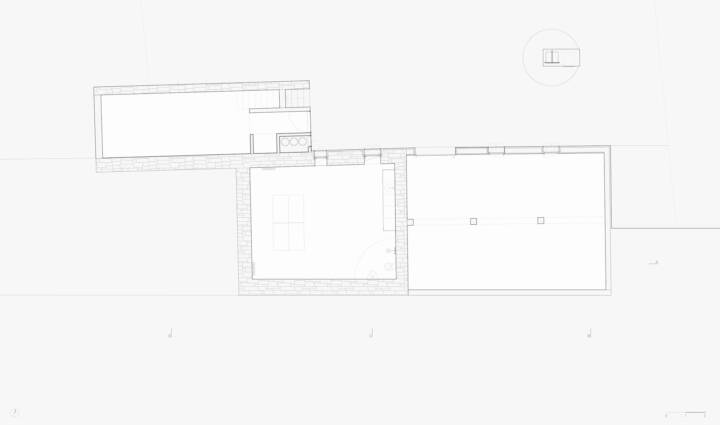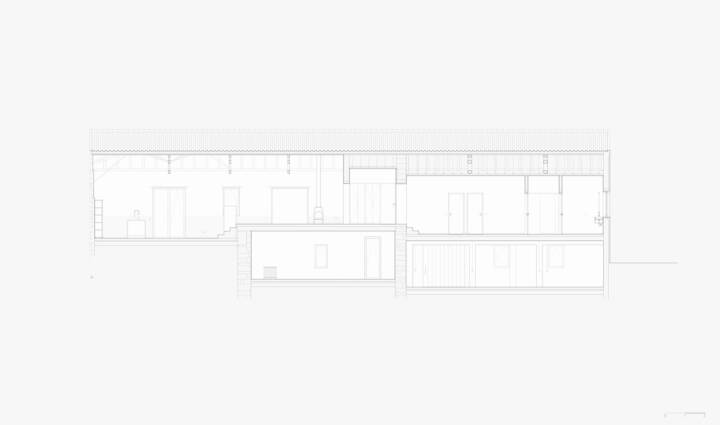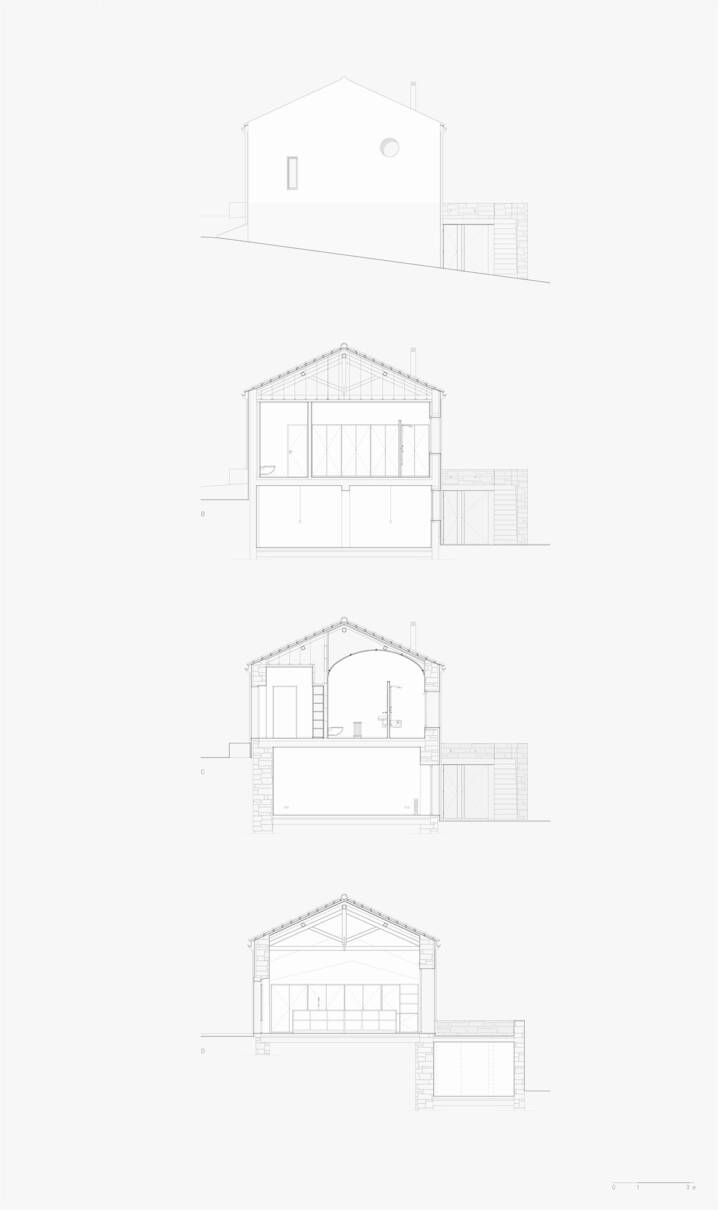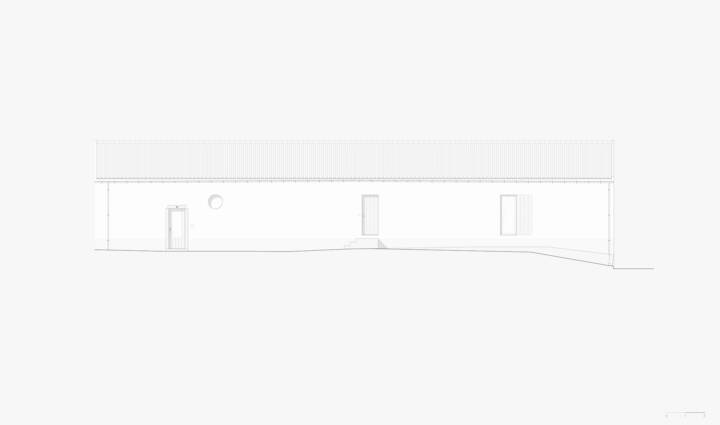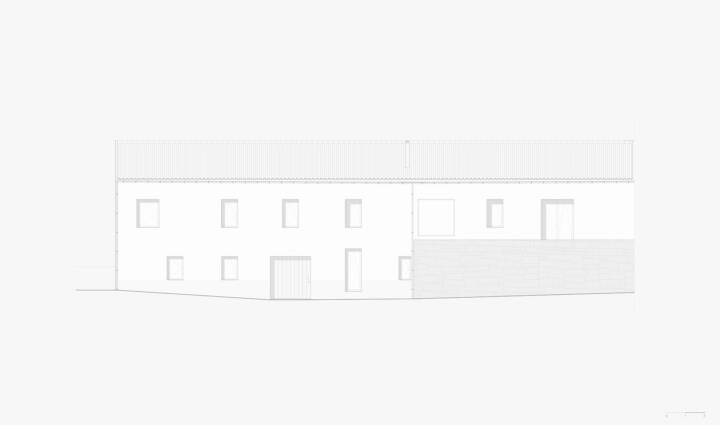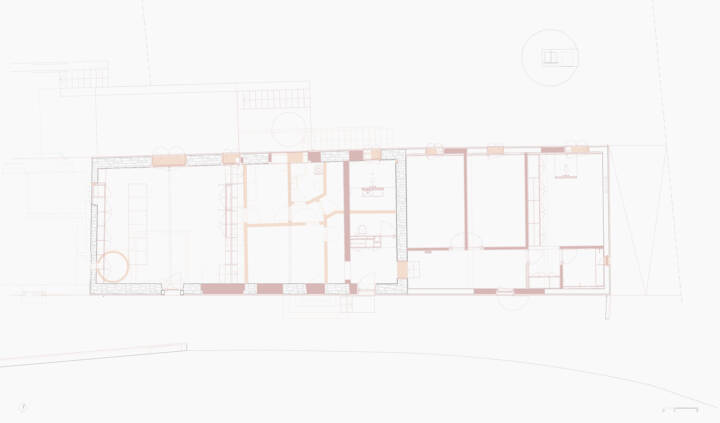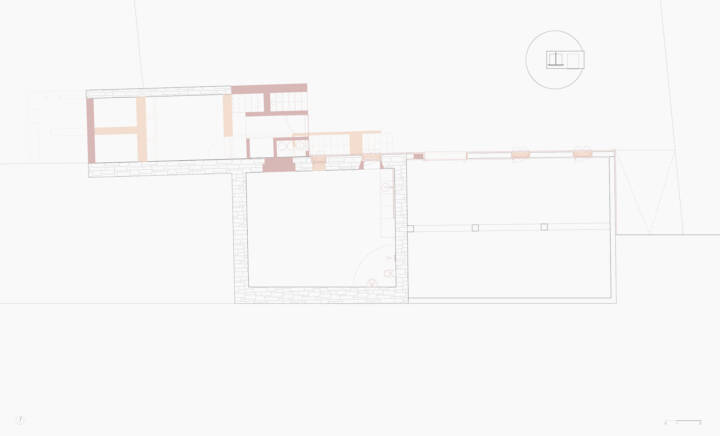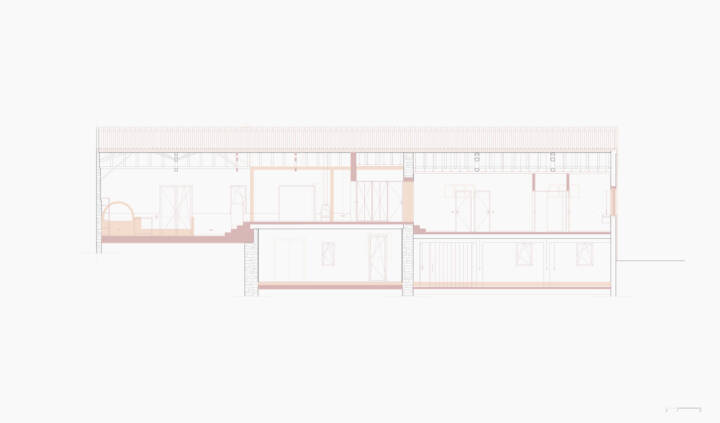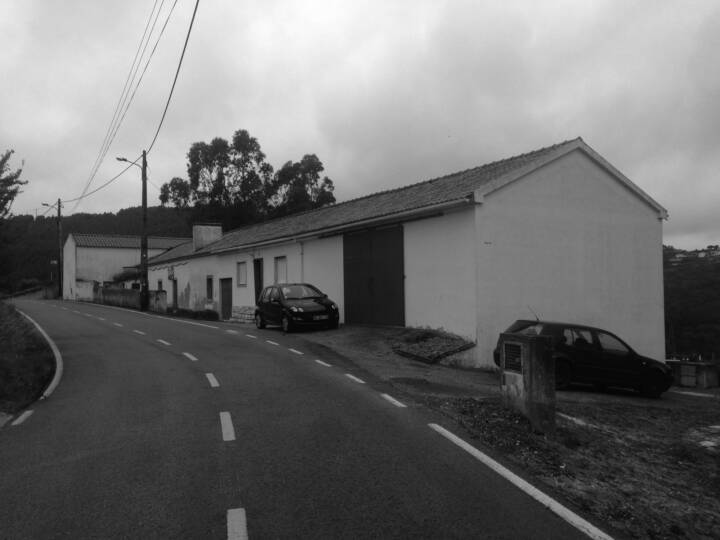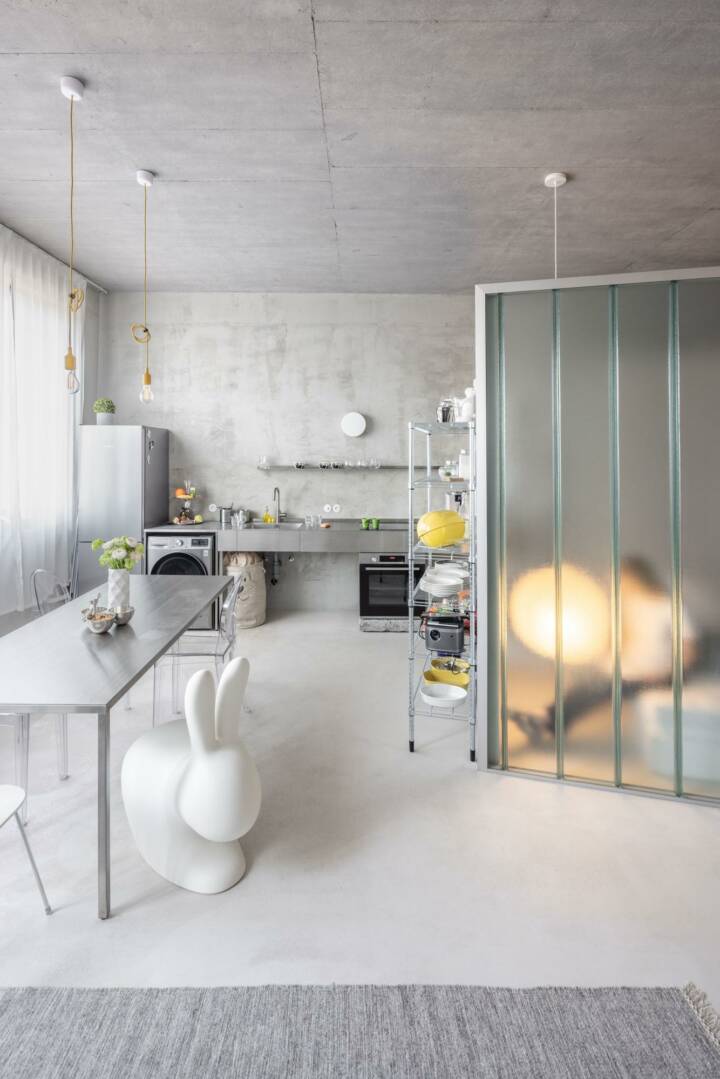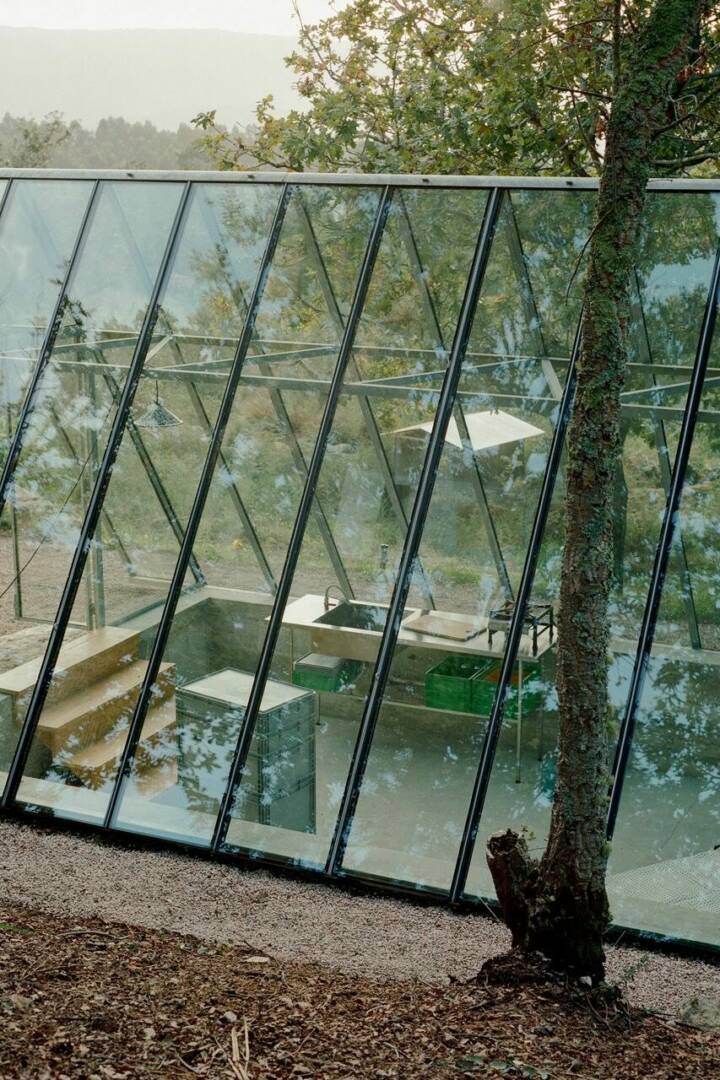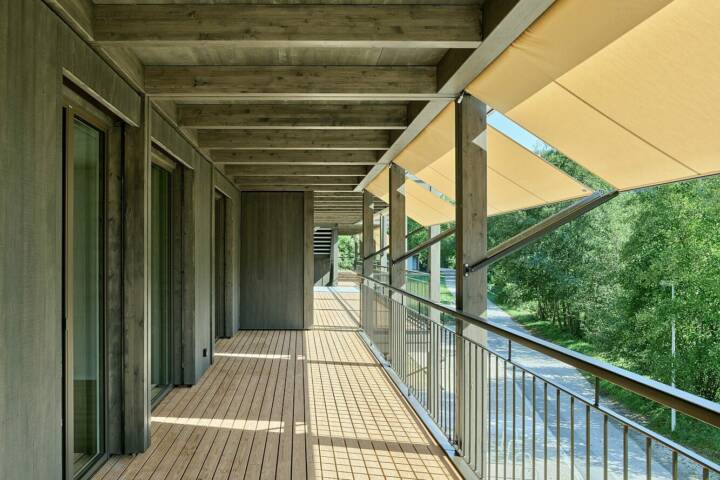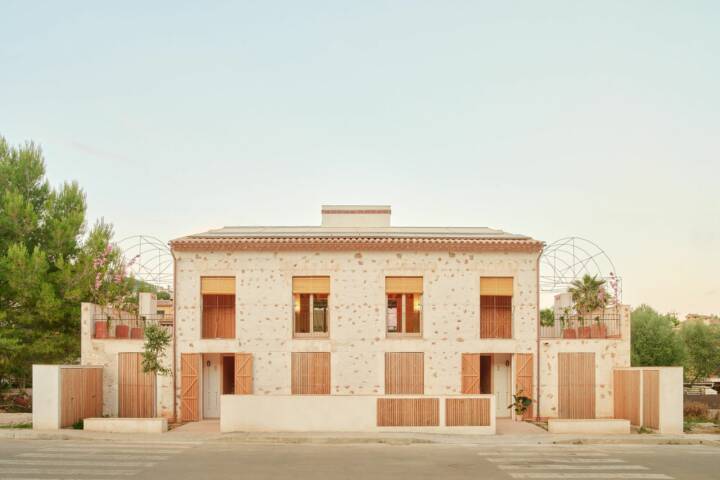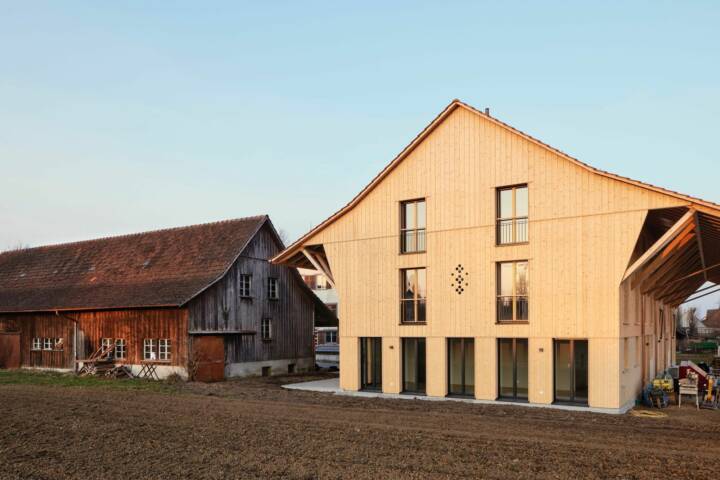Architects: Atelier Parto Photography: Francisco Ascensão Construction Period: 2024 Location: Mafra, Portugal
That was the perfect place to escape. A shelter in the hills of Mafra grounded in a different time and space.
A big long house, once split in two. Other parts came along the main street, hiding the view over the landscape as the evidence of this collage was latent in the contrast between brick and the shale masonry. Inside, the concrete floor slab fractioned the old cellar and the windows arbitrarily teared the thin brick facade creating a high contrast with the deep openings in the stone masonry walls.Nonetheless, the scars these transformations have inflicted were as violent as they were precious, and therefore worth preserving.
In the middle of a long white surface, three steps announce the entrance. Inside, the program follows the rhythm of the different levels, elevating the atrio and creating a hinge between the social and the private area. Behind it, a core a bath room is revealed. Its arch vault, its stone partition and an enigmatic Fibonacci window create an atmosphere of contemplation.
Read MoreCloseOn one side three steps separate us from the bedroom corridor, where the long bench and the relics scattered across the walls set a quiet mood. On the opposite end, a door hides a large open space divided in two levels mediated by a long wooden cabinet, an ambiguous limit that contains the spaces whilst also letting them flow. The fresh plaster hides the new infrastructure and covers the pre-existing openings, creating a strong contrast with the intense stone texture of the ancient walls, making both the scars and the new intervention even more visible. In the upper level, the living room, punctuated by the fireplace is overtaken by the framed landscape, as it leans over the dining room and the kitchen.
Next to it, a wide terrace looks over the landscape and the concrete stairs lead us down the hill inviting us to take a closer look. In this lower semi buried level, three individual accesses lead us to the workshop, the multipurpose room and the technical area.
Whilst the South and West facades mediate a more contained relation with the street and the village, the exposed openings to the North create a subtle dialogue with the view and the land. Along the white calid walls the openings shape an order built upon arrythmias, following premises of experimentation and plasticity, setting the score to which we can hear and experiment this house.
Text provided by the architect.
